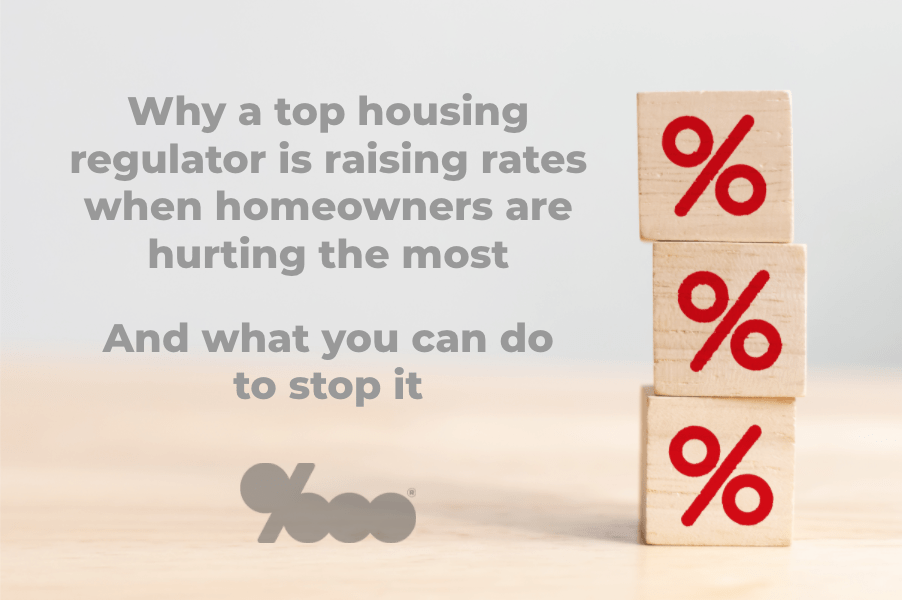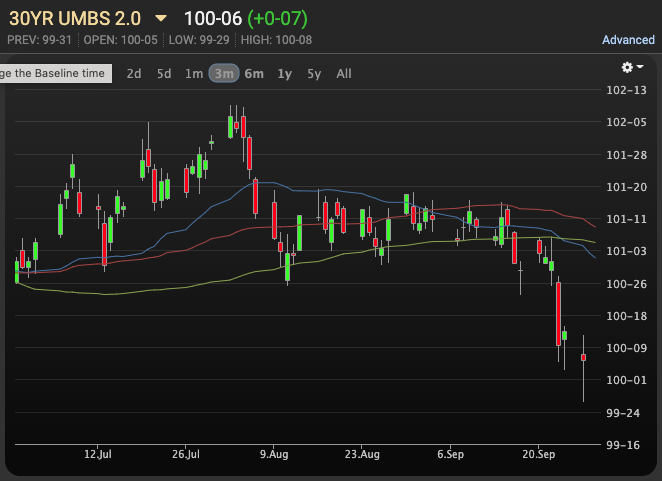How Regulators Might Kill 2020 Mortgage Refinance Boom

A top U.S. regulator might have just killed the 2020 mortgage refinance boom, removing low rate stimulus when Americans need it most. Here’s a rundown, and I’ll update this post as this situation plays out.
Fannie Mae and Freddie Mac back America’s mortgage market by buying loans from lenders. This enables lenders to make more mortgage refinance loans for cheaper as long as lenders follow Fannie and Freddie rules for making loans.
Those rules ultimately come from Fannie and Freddie’s regulator, the Federal Housing Finance Agency (FHFA), who this week made a rule lenders must pay 0.5% on every refinance loan they make to consumers.
Lenders pass these costs onto consumers, so this 0.5% fee effective September 1 will be added to fees quoted by lenders to consumers. On a $300,000 loan, this is an extra $1500 in closing costs.
Or in lieu of cash, it could be factored into the rate, making the mortgage rate about .25% higher. If that same $300,000 loan had a 0.25% higher rate, that’s an extra $750 per year in interest cost.
IMF On Flawed FHFA Mortgage Refinance Reg
Here’s Inside Mortgage Finance FHFA adding a 0.5% fee increase to mortgage refis.
This harms consumers when they need mortgage refinance stimulus most.
And the GSEs FHFA oversees already have the risk on these refis.
Here's @IMFpubs team on FHFA adding a 0.5% fee increase to mortgage refis.
Agree with @MBAMortgage this is outrageous.
It harms consumers when they need it most.
And the GSEs FHFA oversees already have the risk on these refis.
And it harms consumers when they need it most pic.twitter.com/8iym8Bv2SV
— Julian Hebron (@TheBasisPoint) August 13, 2020
Mortgage Bankers Association On Increased Consumer Cost of Bad Mortgage Refinance Policy
Here’s the Mortgage Bankers Association saying mortgage refinance price hike means +$1400 for avg refi consumer.
Fannie/Freddie (regulated by FHFA) send these “loan level price adjustments” to lenders who price them into rate quotes.
So people pay .5% more in fees at closing or take a higher rate.
Bad policy!
Here's @MBAMortgage saying refi price hike means +$1400 for avg refi consumer.
Fannie/Freddie (regulated by FHFA) send these "loan level price adjustments" to lenders who price them into rate quotes
So people pay .5% more in fees at closing or take a higher rate
Bad policy! pic.twitter.com/DKX7OW2k3P
— Julian Hebron (@TheBasisPoint) August 13, 2020
What You Can Do To Fight This Bad Mortgage Policy That Raises Rates & Fees For Homeowners
This FHFA 0.5% refi price hike is nonsense that hurts consumers when they need it most.
Here’s what I sent my Rep & Senators today, thanks to Mortgage Bankers Association’s Mortgage Action Alliance.
Only takes seconds (LINK BELOW), so all industry friends, please join in so we can help consumers…
This FHFA 0.5% refi price hike is nonsense that hurts consumers when they need it most. Here's what I sent my Rep & Senators today, thx to @MBAMortgage's Mortgage Action Alliance. Only takes seconds (LINK BELOW), so all industry friends, please join in…https://t.co/3WRyhz6j3e pic.twitter.com/PeQMgvFCYT
— Julian Hebron (@TheBasisPoint) August 13, 2020
Here’s Former MBA Head David Stevens On Why FHFA Prioritizes Billionaires Over Consumers
And here’s former MBA head David Stevens in HousingWire laying out FHFA’s policy lapses throughout this crisis.
Spoiler alert: the FHFA is out to protect billionaires instead of consumers.
Everyone please refer to last post above and link to alert your reps/senators. It only takes seconds.
Here’s the link and it’s also in the tweet below.
And here's former MBA head David Stevens in @HousingWire laying out FHFA's policy lapses throughout this crisis. Everyone please refer to my tweet above and alert your reps/senators, it only takes seconds https://t.co/kZxDpmJkP9
— Julian Hebron (@TheBasisPoint) August 13, 2020
5 GOP & 2 Dem Senators Ask FHFA To Remove Artificial Refi Fee Premium From American Mortgage Market
As of this morning 7 senators, including 6 from the Senate Banking Committee, sent a letter to FHFA chief Mark Calabria asking him to remove the 0.5% refi premium surprisingly imposed last week.
Here’s Inside Mortgage Finance with an update:
Seven U.S. senators — six from the Senate Banking Committee — shot off a letter to Federal Housing Finance Agency Director Mark Calabria Wednesday night asking the regulator to immediately halt a 50 basis point adverse market fee the GSEs are imposing on their seller-servicers.
The loan-level price adjustment, which affects mortgages slated for Sept. 1 and beyond delivery dates, applies to most Fannie Mae/Freddie Mac refinancing transactions.
The industry has been in an uproar since the LLPA was introduced roughly 10 days ago, saying it’s ill-timed given the pandemic and will hurt both consumers and lenders.
Signed by five Republicans and two Democrats, the letter says it’s “deeply troubling” the FHFA would allow the new fee “during what is universally agreed to be a period of great economic distress … We therefore request that you immediately act to require that the GSEs withdraw this fee to prevent further harm to everyday Americans and our economy.”
The elected officials add they find it distressing that such a large fee would be introduced “with no consultation with Congress and no notice to external stakeholders.”
They write: “While there is precedent for this type of charge going back to 2007, the 2007 charge was announced on December 5, 2007, and implemented on March 1, 2008. That’s over 11 weeks of notice compared to the two weeks for this most recent fee.”
Refi Risk No Longer Regulatory – It’s Rates Rising
All the posts above are from last year when housing’s top regulator, the FHFA, handed down some decisions that the industry rejected because the rules made rates artificially.
That situation was resolved in a great showing of industry working with regulators to do what’s right for the consumer.
Now the rate risk is different. It’s market driven. Last week, the Fed said it could slow mortgage bond buying to keep rates low — aka quantitative easing — as soon as November. Bond markets reacted sharply as you can see in the chart below, which demonstrates how rates are at 3 month highs.

